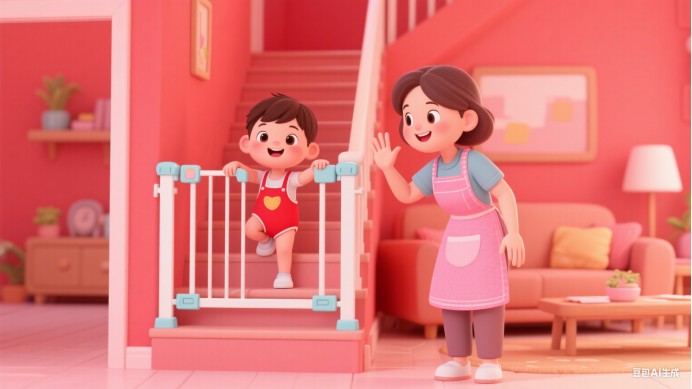
As parents, keeping children safe at home is always a top priority. Although we can’t make our homes completely “child-proof,” there are many simple ways to reduce the risk of injuries. Let’s learn about some important safety tips.
Drowning is a serious danger for young children, especially those aged 1 to 2. Never leave your child alone in the bathroom, even in a few centimeters of water. When near water — like in a pool or at the beach — always keep children within your sight and arm’s reach. After bathing, empty the bathtub and keep bathroom doors closed. Teaching children to swim and having a first-aid kit ready are also helpful.
Falls are common among children. To make your home safer, remove toys or rugs that might cause tripping. Use safety gates at the top and bottom of stairs, and put non-slip mats in the bathroom. Never leave a baby on a high table or change tables without holding them. When using prams (婴儿车) or high chairs, always fasten the safety harness.
Hot things like heaters, stoves, and boiling water can cause serious burns. Keep children away from the kitchen when cooking, and turn pot handles inward on the stove. When running a bath, add cold water first, then hot water to keep the temperature around 37–38°C. Teach children to “stop, drop, and roll” if their clothes catch fire, and always have a fire escape plan at home.
Young children often put things in their mouths, so keep medicines and chemicals locked up and out of reach. Never leave tablets on the table, and throw away empty medicine bottles after rinsing (冲洗) them. If you think a child has eaten something poisonous, call the emergency number right away.
Remember, safety at home needs both careful preparation and constant supervision. By following these tips, we can help children grow up in a safer environment.
原创编写 版权所有 侵权必究! 每日更新 个性化阅读 英语飙升!
1.1. What must parents do right after bathing?
A Teach swimming skills.
B Empty the bathtub.
C Open bathroom doors.
D Prepare a first-aid kit.
解析:选B。B 细节理解题。第二段明确提到“After bathing, empty the bathtub”(洗澡后清空浴缸),这是直接细节信息。故选B。
3.3. Why does the author suggest adding cold water first when running a bath?
A To save water.
B To test the temperature.
C To prevent burns.
D To make water warmer.
解析:选C。C 推理判断题。第四段讨论烫伤风险,“add cold water first, then hot water”是为了控制水温在 37–38°C,避免烫伤孩子。故选C。
4.4. What is the main idea of Paragraph 5?
A Lock medicines safely.
B Prevent poisoning risks.
C Call the emergency number.
D Dispose of bottles properly.
解析:选B。B 段落大意题。第五段主旨是防止中毒风险(如锁好药品、丢弃药瓶等)。干扰项A(安全锁药)以偏概全,只是具体措施之一;C(拨打紧急电话)扩缩范围,文本提到但仅限紧急情况;D(妥善处理瓶子)主观臆断,文本说冲洗空瓶,但非段落核心。故选B。
